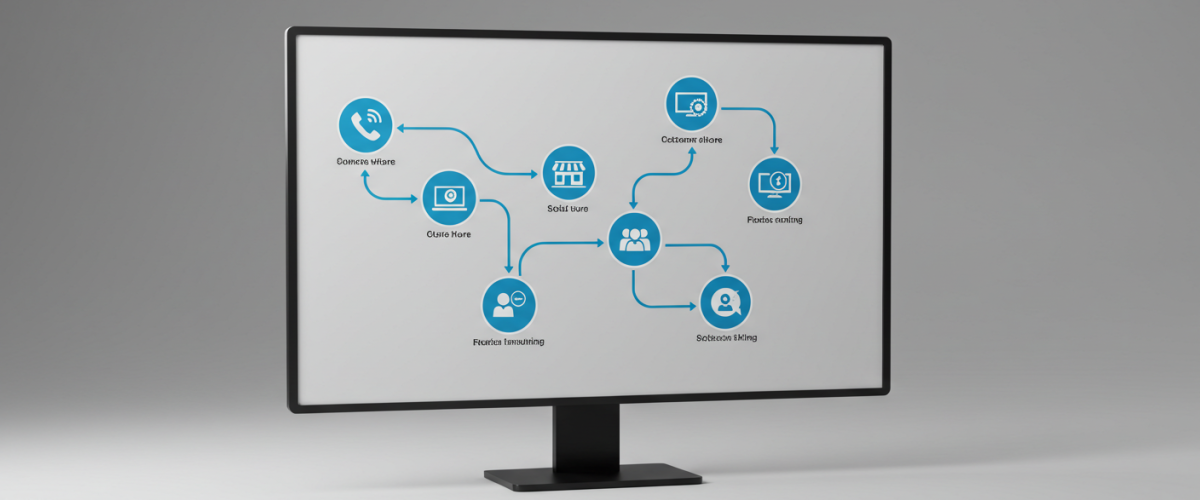
The modern customer journey has evolved into a complex web of interactions spanning multiple channels, devices, and touchpoints. This intricate pathway from initial awareness to final purchase and beyond requires sophisticated mapping techniques to understand and optimize. Customer journey mapping in digital ecosystems goes far beyond linear progression models, encompassing the messy reality of how customers actually discover, evaluate, and engage with brands in today’s interconnected digital landscape.
Digital ecosystems create multiple entry points for customer engagement, with potential customers discovering brands through search engines, social media, referral links, advertisements, or word-of-mouth recommendations that lead to digital exploration. Each entry point represents a unique context and mindset that influences subsequent behavior and expectations. Understanding these varied starting points helps businesses optimize their presence across different channels and create consistent experiences regardless of how customers first encounter their brand.
The research phase of customer journeys has become increasingly sophisticated and lengthy. Customers now conduct extensive online research before making purchasing decisions, consulting multiple sources including company websites, review platforms, social media, comparison sites, and peer recommendations. This research behavior often spans days, weeks, or even months, creating extended consideration periods that require sustained engagement strategies rather than immediate conversion tactics.
Cross-device behavior patterns have complicated journey tracking and optimization efforts. Customers frequently start research on mobile devices, continue on desktop computers, and complete purchases on tablets or different devices entirely. This device-hopping behavior requires seamless experiences across all platforms and sophisticated tracking systems that can connect interactions across different devices and sessions. The inability to provide consistent cross-device experiences can create friction that interrupts the customer journey.
Micro-moments throughout the customer journey represent critical opportunities for engagement and influence. These brief instances when customers have specific needs or questions create windows for brands to provide value and guide decision-making. Identifying and optimizing for these micro-moments requires understanding when customers are most receptive to different types of information and assistance throughout their journey.
Social influence plays an increasingly important role in digital customer journeys. Customers actively seek validation from peers, influencers, and online communities before making decisions. Social proof in the form of reviews, testimonials, and social media endorsements can significantly accelerate or decelerate journey progression. Brands must consider how social elements integrate into every stage of the customer journey and actively manage their social presence and reputation.
The consideration phase has expanded to include multiple alternatives and extensive comparison activities. Customers can easily research competitors, compare features and prices, and evaluate multiple options simultaneously. This increased transparency and choice have made differentiation and value communication more critical than ever. Brands must clearly articulate their unique value propositions and competitive advantages throughout the customer journey.
Purchase decision factors have evolved beyond price and features to include factors like brand values, social responsibility, customer service quality, and peer recommendations. Modern customers evaluate brands holistically, considering not just what they offer but how they operate and what they represent. This expanded evaluation criteria requires brands to communicate their values and demonstrate their commitments throughout the customer journey.
Post-purchase experiences have become integral parts of the customer journey rather than endpoints. Customer satisfaction with delivery, onboarding, customer service, and ongoing support significantly impacts loyalty, repeat purchases, and referral behavior. The post-purchase phase represents opportunities to strengthen customer relationships and influence future journey cycles through positive experiences and continued value delivery.
Personalization throughout the customer journey has become a competitive necessity rather than a nice-to-have feature. Customers expect relevant content, product recommendations, and experiences tailored to their specific needs and preferences. This personalization requires sophisticated data collection and analysis capabilities that can deliver individualized experiences at scale while respecting privacy preferences and maintaining trust.
Journey mapping tools and analytics have evolved to provide more comprehensive views of customer behavior across touchpoints. Advanced attribution models help identify which interactions contribute most significantly to conversions, enabling better resource allocation and optimization efforts. Heat mapping, user session recordings, and behavioral analytics provide deeper insights into how customers navigate digital properties and where they encounter difficulties.
Omnichannel integration has become essential for delivering cohesive customer journeys. Customers expect consistent messaging, branding, and experiences whether they interact with brands online, through mobile apps, via email, or through other channels. Disconnected experiences that require customers to restart their journey or repeat information can create frustration and abandonment.
The role of content in guiding customer journeys has expanded to include educational materials, interactive tools, and self-service resources that help customers make informed decisions. Providing valuable content at each journey stage can build trust, demonstrate expertise, and influence decision-making while reducing the need for direct sales intervention.
Real-time journey optimization capabilities enable dynamic responses to customer behavior and changing circumstances. Machine learning algorithms can identify patterns and predict customer needs, enabling proactive engagement and personalized experiences that adapt to individual journey progressions.
Privacy considerations and data protection regulations have influenced how businesses track and optimize customer journeys. Compliance requirements and customer privacy preferences must be balanced with the need for journey insights and personalization capabilities. Transparent data practices and consent management have become integral components of customer journey strategies in digital ecosystems where trust and privacy concerns increasingly influence customer behavior and brand relationships.

